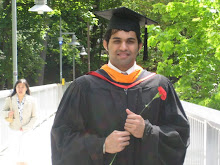Investments are subject to market risk….. …So goes the red herring. Do we take the time to understand this? My guess is, No. The first question that follows is, “how can I double my money quickly”. I do not understand the fetish with doubling the money but this has been a long selling line to attract novice investors. “Sir, your money doubles in 5 years………” most of us don’t pay attention to the rest of the sentence and get stuck to the ringing words of double in 5 years. Many start making plans of how they could purchase that new house, car with the money generated from their investment. So, I ask again, do we actually listen to the red herring?
There is a huge difference between investing and speculating and very often we confuse one with the other. While the former is based on hard facts and financial numbers, the latter is mostly on market sentiments and could be a whipped up euphoria that would soon die down. So a speculative investor plays the short game of whipping up hysteria and realizes the earning by reversing the position before the hysteria dies down. The rest of us “long time investors” who should have relied on numbers before investing lose out money as we cannot time the reversal of position in a speculative market. The novice investor always loses money in the “double or nothing game”. However, there are a few ways a novice investor can double the investment too provided they do the necessary ground work.
1. Rule of 72: This is the rule of thumb that helps us rate comparable investment portfolios. The rule is simple – if you divide the ROI (annualized) into 72, you get the number of years it would take for your investment to double. E.g. for a 10% ROI, the investment doubles every 7.2 years (or 7 years). Ideally an investment portfolio is termed decent if it can double in value between 7-9 years. If the time period is over 9, then it’s considered as a “safe investment”- low risk and low yield. If the time period is less than 7, the portfolio is loaded with speculative stocks and is definitely high risk and high return. While neither one is good nor bad, investors should use this rule to know the risk they are taking up. Investment is about being informed and not being caught blind sighted.
2. Buy on margin: While this is not actually depending on the stock market to double your investment, buying on margin certainly accentuates your earnings. Buying on margin essentially means trading on borrowed money. E.g. If you borrowed money from market (Banks no longer lend money for stock purchase) for say 10% interest and you invest in a portfolio with 14%ROI, you make a cool 4% of the value of the portfolio after paying the margin money and interest. This is money you have earned without investing any money, so out of thin air. However, it’s not advisable to trade entirely on margin; you need to find a proper balance that gets you a good ROI while not exposing you to adverse risk. Good indicator is to trade up to 70% margin and not further.
3. Blood bath: In the depression of 1929, Keynes lost ¾th of his investment to the stock market crash but was one of few people to earn back most of his investment. The golden rule he followed was – “Always buy in a blood bath”. There are times, when stock markets crash and people lose large portions of investment portfolio. The best way to double your investment (even if your own portfolio lost value) is to go on buying spree. The amazing thing about a blood bath is that it triggers a selling sentiment and most good stock is offloaded and loses value. However, the stock market quickly corrects itself and the stocks rebound in short term and reach to almost the values they held before the blood bath began. This would ensure you more than double your investment over 2-3 months. The investor needs to have a keen eye for stocks and always go for buy during a blood bath. It’s a risk free way to surely double your investment. Investing in the same stock over long period is not recommended, this is just a means to win back most of your losses in the blood bath.
4. Retirement funds: In almost every country, there are laws that encourage you to build a retirement nesting. In India, employers are bound by law to match the additional investment made by the employee into Employee provident fund which over and above the minimum required by law. Similar law is present in the United States as well. Even though, you may not realize the benefits immediately, this is the most sure shot way to double your investment from day 1.
I would like to end on a cautious note by saying; the red herring is there for a reason. Never ignore the fine print while investing especially if you are trading using your savings. Wish you all the luck.
So long..

